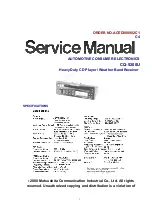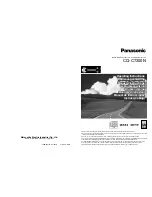
8” THICKNESS PLANER
HEALTH ADVICE
Warning!
When drilling, sanding, sawing or grinding, dust particles will be
produced. In some instances, depending on the materials you are working with,
this dust can be particularly harmful to you (e.g. lead from old gloss paint).
You are advised to consider the risks associated with the materials you are working
with and to reduce the risk of exposure. You should:
- Work in a well-ventilated area.
- Work with approved safety equipment, such as those dust masks that are specially
designed to filter microscopic particles.
SPECIFIC SAFETY INSTRUCTIONS
Caution!
If used incorrectly, woodworking machines can be dangerous, for this
reason always comply with the safety instructions mentioned in this manual.
1. Never work without the protective equipment prescribed for the relevant operation
and do not make any modifications to the machine that could undermine safety.
2. Children and young persons must not operate this machine. This rule does not apply
to young persons over the age of 16 being trained and supervised by an expert.
3. Prior to all work, make sure that the safety and operating equipment is securely
attached. Any parts, if damaged must be repaired correctly or replaced.
4. Set up the machine on a firm flat surface so that the table is horizontal and the
machine cannot tip over.
5. Never work with pieces which are too big or too small for the machine’s capacity.
6. Before planing, examine the workpiece for metal objects and stones and remove
them if necessary.
7. When planing, make sure that the portion of the cutter head not being used is
covered by the cutter guard.
8. When planing thin pieces of timber, suitable devices must be used to ensure that
these small pieces are properly positioned and guided.
9. The anti-kickback device of the planer must be checked regularly to ensure that it
remains in proper working condition. All pawls of this device must move freely and
must drop down by their own weight when lifted. The point of these pawls must be
kept sharp.
10. Do not begin planing until the cutter head has reached full speed.
11. When planing, take up a working position so that you are always on one side of the
machine away from the area directly in front of or behind the cutter head.
12. Always keep your hands well away from the cutter head or the chip ejection area
while the machine is running.
13. A uniform feed rate when planing increases the life of the cutting blades and reduces
the risk of accidents.
14. The planing blades must be sharpened or replaced in good time as blunt knives do
not only increase the risk of kickback, but also impose an unnecessary load on the
motor.
15. The sawdust created by planing can make it difficult to see as clearly as necessary
and can impair the operator’s health in certain circumstances.
16. If not working outdoors or in a well ventilated area, the machine should ideally be
connected to an extractor unit with an air velocity of at least 20 m/s (65.6 ft/sec.).
17. The sound pressure level at the workplace generally exceeds 85 dB (A), Users should
BTP210F-M-070928.indd 5
2007-9-28 13:35:53






































